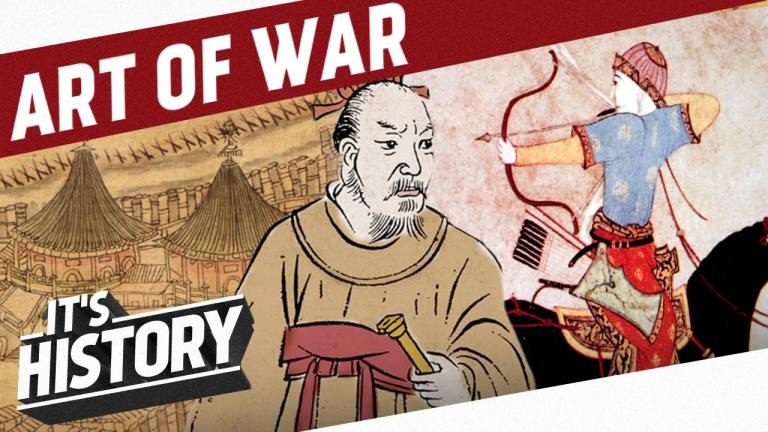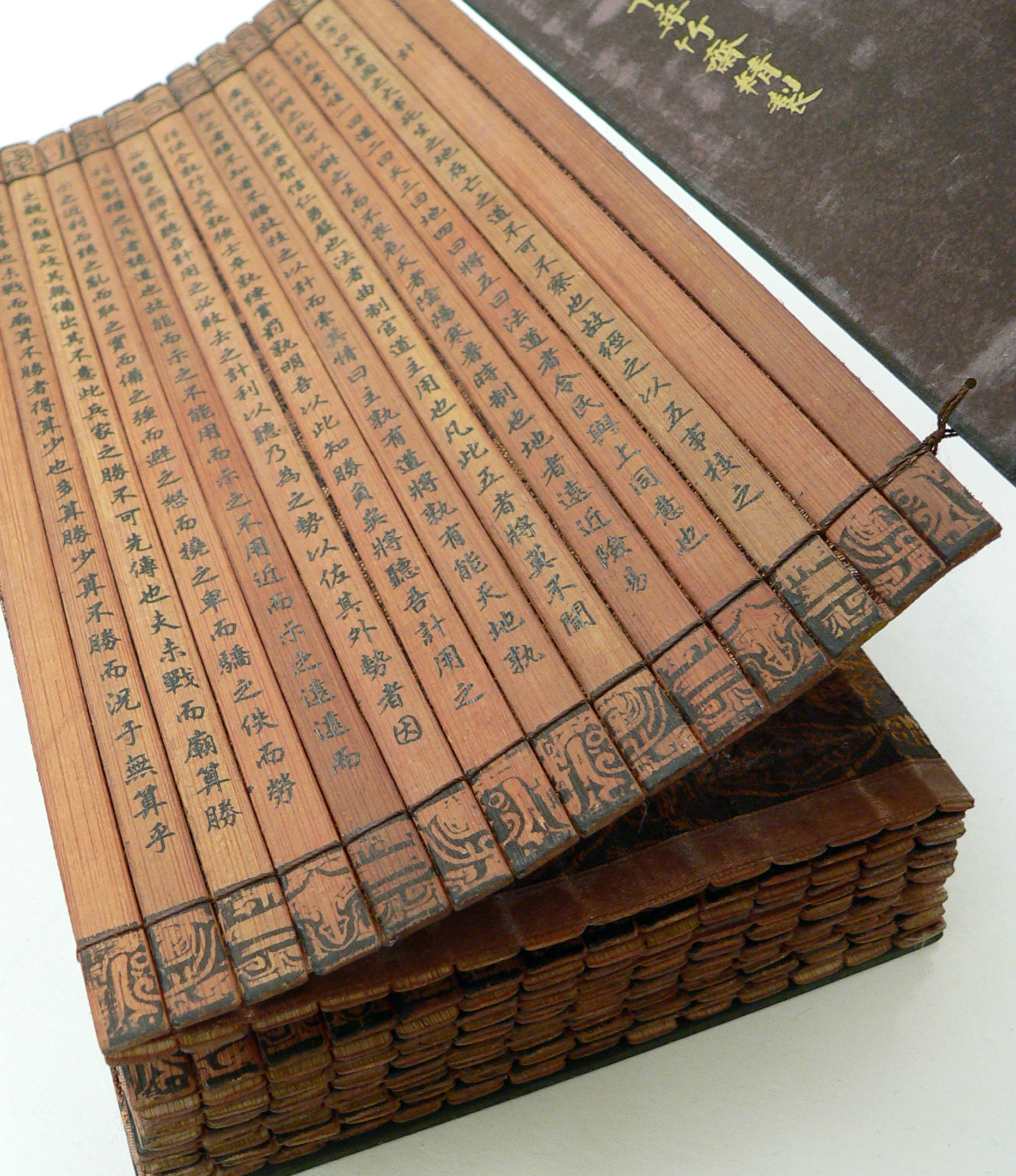Sun Zi’s Art of war
6 min readSunzi’s Art of War(Sunzi bingfa), is an ancient classic on war. It consists of 13 chapters in about 6,000 characters. Sun Wu, respectfully called Sunzi, was born sometime between 550 and 540 BC, or toward the end of the Spring and Autumn Period (770-476 BC). He was a native of the State of Qi but later moved to the State of Wu, where he became the king’s trusted strategist. As many of the book’s contents bear features of the Warring States Period (475-221BC), some scholars believe the book was probably written in the middle of that period. It represents the theories of war of the Sunzi School originated by Sun Wu.

Of the more than 3,000 books on war from the pre-Qin(before 221 BC) period to the Qing Dynasty (1616-1911), Sunzi’s Art of War stands out as the greatest classic. It excels over the other books in terms of strategy design, philosophical grounding and in tactical application. Over the centuries it has been respected as “the source for all books on war.”
The Strategic Thoughts of Sunzi Of the rich strategic thoughts of Sunzi, we have selected just a few for ilustration.
The first example is,”Planning before going to war.”Before entering a war, one must compare and analyze all factors of both sides. These mainly include: morale, climate, terrain, commanders, and rules.”Morale”refers to the approval or disapproval of the people. The army that has the approval of the people will gain their support, while one without endorsement will lose their support.
“Climate”refers to seasonal conditions at the time of war.”Terrain”refers to the distance(far or near), position (ease or difficulty of access), size(large or small), and height(high or low) of the topography for war. Consideration must also be given to the degree of security or danger in the area.”Rules”refer to regulations governing the army,”Who should carry out orders? What are the respective strengths of the soldiers? Who is responsible for training the troops?Who decides rewards or punishments?”The five aspects for consideration during war were echoed by Carl von Clausewitz(1780-1831),a German war expert, as”strategic factors.”One or two of these factors are insufficient for one to judge the feasibility and consequences of a war. Consideration must be given to all these factors and their combinations. Such holistic thinking is a special feature of Sunzi’s Art of War.

The second example is,”One can fight and win a hundred wars if one knows both oneself and the enemy.”This is probably the most widely quoted concept from Sunzi’s Art of War.
The purpose of considering the five aspects, as introduced above, is actuallyto know the real situations on both sides. It is not easy to get to know the enemy, because they do their best to keep their secrets and resort to all sorts of deception. Getting to know oneself is not easy, either. What do the people think about the war? What is the capability and state of mind of the commander? How is the morale and training of the troops? These factors are not usually self-evident without thorough analysis, and one may be misled by false impressions. There have been more than a few cases in history where the commander received permission from the ruler to go to war, but without reporting to him that the army was in fact incapable of fighting. The result, needless to say, was always total destruction of the army. This is why Sunzi said,”One can fight and win a hundred wars if one knows both oneself and the enemy. The odds for winning are half and half if one knows oneself but not the enemy. And one is bound to fail if one knows neither oneself nor the enemy.”He added,”The odds for winning are half and half if one knows that one’s troops are able to attack but does not know the enemy troops are invulnerable to attack. The odds for winning are half and half if one knows that the enemy troops are vulnerable to attack but does not know that one’s own troops are not in a position to attack. The odds for winning are half and half if one knows that the opponent is vulnerable to attack and that one’s troops are in a position to attack but does not know that the terrain is unsuitable for fighting. Thus an expert of war does not leave anything unclear when declaring war, and also has all sorts of methods to deal with any situation. Victory is certain, if one knows both oneself and the enemy; victory will be complete, if one further knows seasonal and topographic conditions.”
The third example,”The army survives by treachery.”Sunzi said,”The use of force is actually the use of treachery.”In his discussion of “strategy”in On War, Carl von Clausewitz attributes its origin to “treachery.”
By”treachery”Sunzi meant that the army “should appear to be incompetent when it is competent, appear to be unprepared to fight when it is prepared, appear to be retreating when it is advancing, appear to be advancing when it is retreating.”In other words, it is crucial to deceive the enemy with false impressions.

By treachery, one should “tempt the enemy with gains, attack the enemy when they are in disorder, be prepared for the enemy when they are equal in strength, avoid the enemy when they are stronger,(further) aggravate the enemy when they are angry, cause the enemy to become arrogant when they are prudent, tire the enemy when they are at rest, sow discord among the enemy when they are united.”In a word, treachery is meant to entice the enemy to make all sortsof mistakes, defeating them after they fall into a state of chaos. It also means “attacking the enemy at an unexpected time and place.”It is by using treachery that an expert of war devises strategies at headquarters while directing his army a thousand miles away to victory.
The fourth example is,”Winning a war without fighting it.”Sunzi did not approve of large-scale killing and destruction, which he regarded as the worst strategy. To Sunzi, the purpose of a war is to win victory, not to kill as many people as possible. On the contrary, one should avoid destroying the enemy stronghold and avoid destruction of life as much as possible. It is best to take over a city intact and to win victory through minimal killing. This is the principle of a”decent victory.”Sunzi went on to say,”Winning every war one fights is not the best one can do; winning a war without fighting is the best onecan do. Therefore, the highest art of war is to outwit the enemy strategically, the second level is to foil their diplomacy, the third level is to attack their army, andthe lowest level is to attack their city. Attacking the city can only be used as the last resort.”In other words, it is not plausible to fight and win wars. It is ideal to achieve victory through means other than war, such as politics, diplomacy, and other deterrent measures. Attacking the city is the least preferable, because,especially in Sunzi’s time, the city was host to many ancestral temples and tombs. The defensive side would often fight to their death, resulting in extensive casualties and destruction. These ideas of Sunzi reflect his deep understanding of what we today call”holistic war.”









